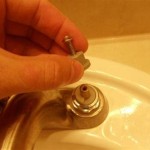Why Do Men's Bathrooms Smell So Bad?
The question of why men's restrooms often have a distinct and less-than-pleasant aroma is one that has puzzled and occasionally disgusted many. While the answer isn't a single, definitive factor, a combination of biological, behavioral, and environmental factors contribute to the olfactory experience that is often associated with men's bathrooms. Understanding these contributing elements sheds light on why this phenomenon occurs and can potentially lead to solutions for improving hygiene and sanitation in these spaces.
Biological Factors: The Root of the Issue
The human body naturally produces waste products, and in the case of men, urine and feces are major contributors to restroom odors. The composition of urine varies slightly between genders due to hormonal differences, leading to variations in the smell. While this isn't the sole factor, it plays a significant role in the overall olfactory experience.
Furthermore, men's restrooms often experience higher levels of volatile organic compounds (VOCs), including ammonia, hydrogen sulfide, and various sulfur-containing compounds. These VOCs are produced by the breakdown of organic matter, particularly urine and feces. The presence of these compounds significantly contributes to the characteristic smell of men's restrooms.
Behavioral Factors: The Contributing Role of Men
While biological factors are inherent, human behavior plays a substantial role in exacerbating the issue. Men, on average, tend to urinate in a more casual manner, leading to spills and splashes that can contribute to unpleasant odors. The lack of proper hygiene practices, such as not flushing after using the toilet or neglecting to wash one's hands, further amplifies the issue.
Additionally, the tendency to leave waste in the restroom, such as discarded tissues or wrappers, further promotes the growth of bacteria and mold, which produce unpleasant odors. This behavior, combined with the lack of adequate cleaning, can lead to a vicious cycle of increasingly foul smells.
Environmental Factors: The Role of the Space
The design and maintenance of men's restrooms also contribute to the unpleasant odor. Poor ventilation can lead to a buildup of VOCs and other odor-causing compounds. Inadequate sanitation practices, such as infrequent cleaning, lack of proper disinfectant use, and insufficient air fresheners, can exacerbate the problem.
The materials used in the construction of restrooms can also play a role. Some materials, such as porous tiles or carpets, can absorb and retain odors, making it difficult to eliminate them. Conversely, smooth, non-porous surfaces can be easier to clean and prevent odor accumulation.
Moreover, the size and layout of restrooms can impact odor dispersal. Smaller restrooms with limited ventilation can trap smells, while larger restrooms with good airflow tend to be more efficient at dispersing odors.
In conclusion, understanding the root causes of unpleasant odors in men's restrooms – biological, behavioral, and environmental factors – is crucial for improving hygiene and sanitation in these spaces. By addressing these factors, we can create cleaner and more pleasant restroom experiences for everyone.
Why Is There A Sewage Smell In Your Bathroom Howstuffworks

Women S Bathroom Vs Men Restroom Cleanliness

6 Reasons Your Bathroom Smells Like Poop And What To Do About It Dude S

Can You Get Diseases From Bad Bathroom Smells Popular Science

9 Reasons Your Bathroom Stinks And How To Fix It

Why Does My Toilet Smell Like Sewage 5 Causes Solutions

9 Reasons Your Bathroom Stinks And How To Fix It

Why Does My Smell 9 Reasons For Smelly Urine In Men

Get Rid Of Stinky Bathrooms Once And For All Making Lemonade
Why Do Men S Bathrooms Smell So Much Worse Than Women R Nostupidquestions
Related Posts







